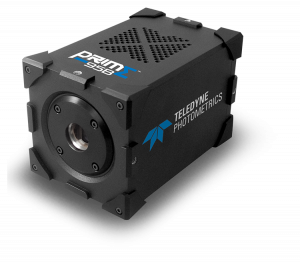Dr. Hennie van der Meiden
Gijs Akkermans
Dutch Institute for Fundamental Energy Research (DIFFER), Eindhoven, Netherlands
Background
With the transition to sustainable energy and new energy technologies, research into controlled nuclear fusion is being carried out. In a worldwide collaboration, the tokamak ITER is being developed and built in Cadarache, France. This is one of the first steps for realizing power plants that can generate clean and reliable energy for the future.
The principal design concept of ITER is a doughnut-shaped vessel where the fusion fuel, a hot plasma of hydrogen isotopes, is contained by high magnetic fields and fusion power can be produced at a plasma temperature of ~100 million °C. Fusion products like helium and impurities have to be exhausted from the core plasma which results in high power loads of 10 MW/m2 (continuous), peaking at over 1 GW/m2 on plasma-facing components (PFCs) inside the exhaust systems. To address this challenge, a linear plasma generator Magnum-PSI was built to study the plasma-wall interactions (Fig.1).

PhD student Gijs Akkermans and Dr. Hennie van der Meiden are involved in the research with the Magnum- PSI in order to test different materials under different plasma conditions similar to those in ITER and beyond. As they told us, “The power load in some areas of the tokamak is too high and can damage the plasma-facing components”.
In their experiments, a continuous or pulsed beam of plasma is focused onto a sample. Different diagnostics are used to monitor plasma conditions such as temperature, density, and calorimetry. Among these, a spectrometer system is used for measuring the population of states of atoms and molecules by collecting the photons originating from these particles. Inside the spectrometer, these photons are separated by wavelength and imaged using a scientific camera.

Challenge
Cameras used for the spectroscopy need to be highly UV sensitive as the wavelength of interest is 340- 500 nm, with good signal-to-noise ratio for UV wavelengths.
For experiments with continuous plasma, different exposure times are needed depending on the intensity and wavelength of the signal, making the dynamic range important. The plasma pulses have a duration of 0.5 ms, and need to be sampled with time scales shorter than in 50 μs, making very fast shutter times desirable. In addition, both types of experiments need to capture the entire field of view without significant magnification, meaning that cameras with a large field of view are necessary.
With the Prime 95B 25mm I can get a 10 μs exposure time with the fast mode, letting us image induced plasma pulses.
Solution
The Prime 95B 25mm delivers on each of the challenges presented by spectroscopy and imaging of the radiated plasma photons, offering great quantum efficiency and low noise at UV wavelengths. As mentioned by Dr. Hennie van der Meiden “with the Prime 95B 25mm I can get a 10 μs exposure time with the fast mode, letting us image the induced plasma pulses and plasma fluctuations.”
The large sensor and wide field of view offered by the Prime 95B 25mm ensures that a large area can be imaged without having to compromise high speed and high resolution, all with very low levels of readout noise and dark current.

